Pauline Hamilton
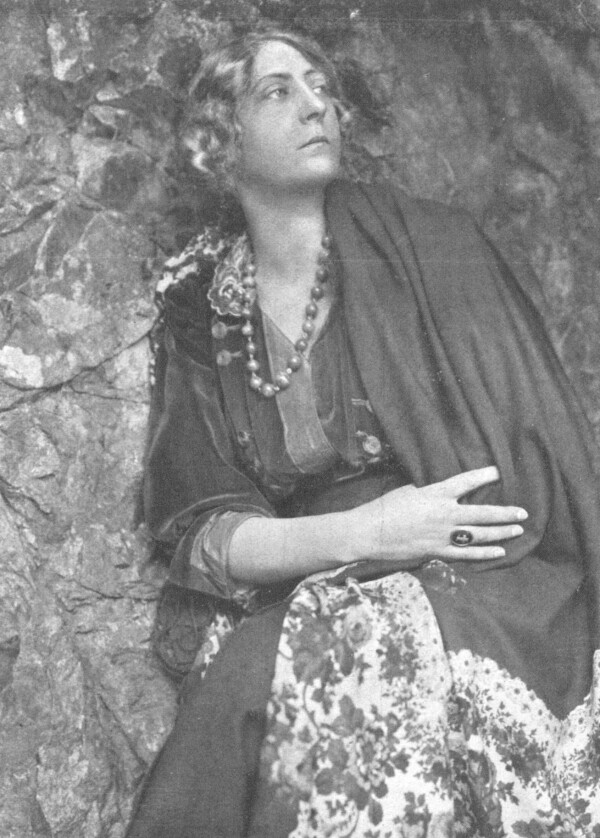
Pauline Hamilton, before 1912, in: Sport und Salon. Illustrirte Zeitschrift für die vornehme Welt, 22.11.1912.
© ANNO | Austrian National Library
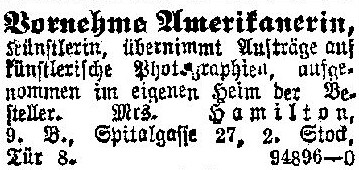
Advertisement, in: Neue Freie Presse, 04.10.1908.
© ANNO | Austrian National Library
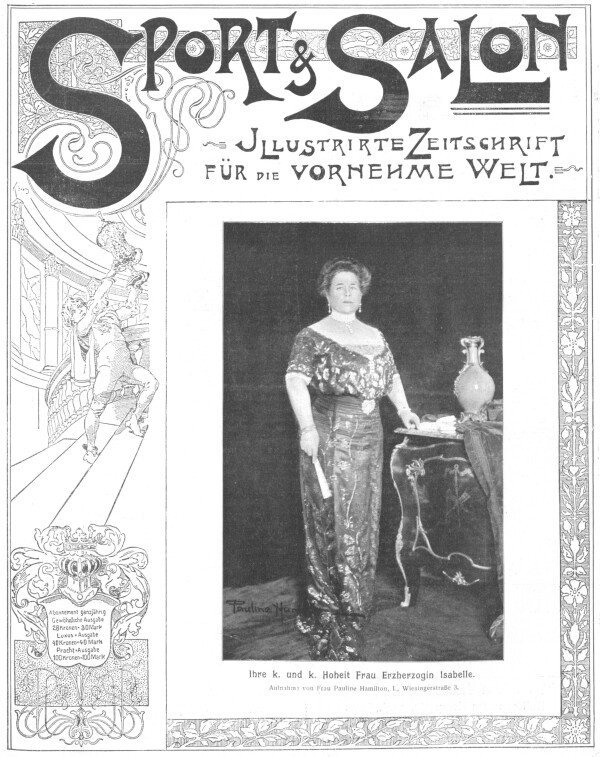
Archduchess Isabella of Austria photographed by Pauline Hamilton, in: Sport und Salon. Illustrirte Zeitschrift für die vornehme Welt, 30.11.1912.
© ANNO | Austrian National Library
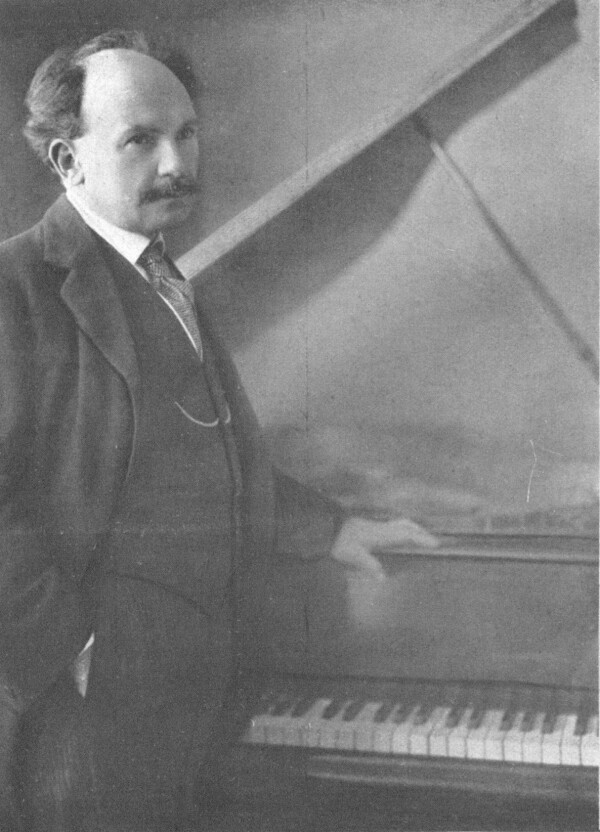
Eugen d'Albert photographed by Pauline Hamilton, in: Sport und Salon. Illustrirte Zeitschrift für die vornehme Welt, 22.11.1912.
© ANNO | Austrian National Library
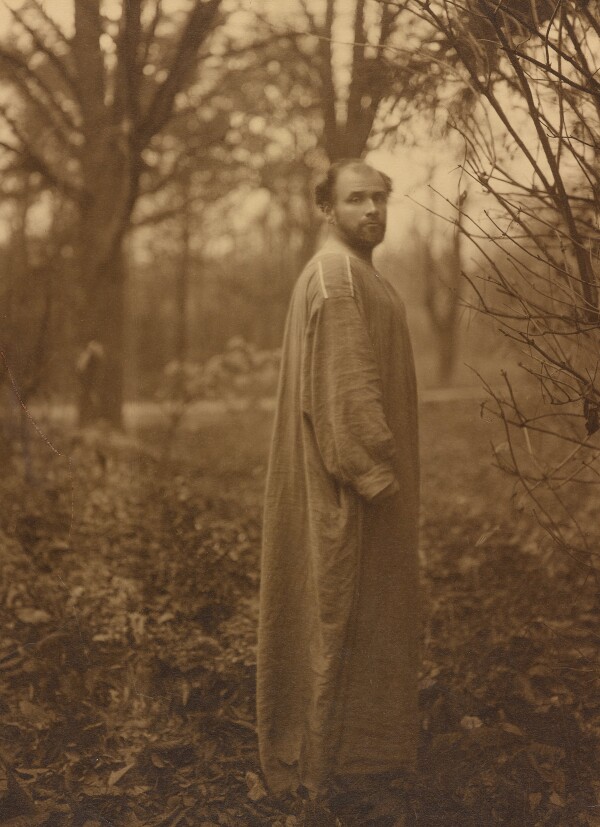
Pauline Hamilton: Gustav Klimt in a painter's smock, presumably circa 1911, Österreichische Galerie Belvedere, Archiv
© Belvedere, Vienna
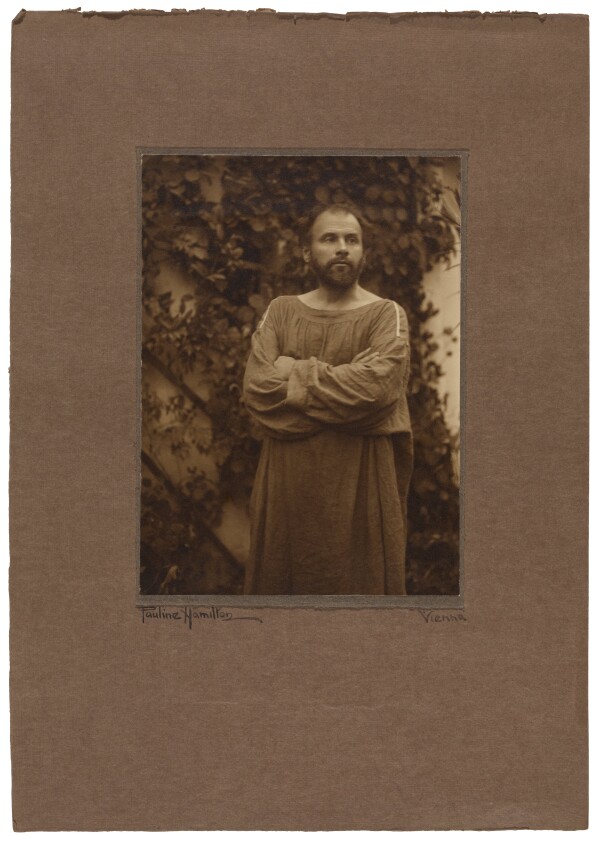
Pauline Hamilton: Gustav Klimt in a painter's smock, presumably circa 1911, Wien Museum
© Wien Museum
The American painter and photographer moved to Vienna around 1908 and initially worked at the Atelier d’Ora. She achieved renown as a portrait photographer of the Austrian nobility, Vienna’s high society and several famous artists, including Gustav Klimt, before she returned to her home country in 1915.
Pauline Kruger, who was of German descent, was born in Middleton, Wisconsin on 5 November 1866. In 1880, the family moved to Minneapolis, Minnesota, where Pauline attended school and later taught piano and painting. She worked at the design studio Smith’s Art Parlors from 1890 and soon made a name for herself as an artist and designer. She used the opportunities presented by the city’s flourishing artistic and cultural scene to open her own studio in the prestigious Syndicate Block building in 1896. Here, she presented portrait paintings and illustrations and hosted many events and exhibitions. She socialized with the art-loving elite, joined the Business Women’s Club and began using the camera as a means for her artistic creativity.
Pauline Kruger met her future husband, the journalist Frank Hamilton, around 1900. In 1901, he was convicted of manslaughter and imprisoned. After his release in 1904, Pauline followed him to San Francisco. They married in 1905 and Pauline continued her artistic activities. Frank Hamilton had been suffering from tuberculosis for years and died of pneumonia in 1906.
After this blow of fate, Pauline Hamilton returned to Minnesota and eagerly pursued her interest in photography, which was to become her main medium. She was acquainted with the landscape photographer Louis Sweet, whose renowned Sweet Studios were also located in the Syndicate Block building. As a member of the informal artists’ association Art League of Minneapolis – co-founded by Robert Köhler, a German-born painter who was then director of the Minneapolis School of Fine Arts – Sweet hosted many meetings and discussions at his studio. Acquaintances like Sweet and Köhler may have encouraged Pauline Hamilton to emigrate; her inheritance from her late husband’s estate provided the necessary financial means.
An “Elegant American” in Vienna
In 1908, Pauline Hamilton moved to Vienna, a city whose art scene was defined by emerging Modernism with exhibitions such as the “Kunstschau Wien 1908”. In October of the same year, she published an advertisement in the Neue Freie Presse: “Elegant American, artist, accepts commissions for artistic photographs, taken at the clients’ homes. Mrs. Hamilton, 9th D[istrict], Spitalgasse 27, 2nd floor, door 8.” The registration of her business was announced in the Österreichische Photographen-Zeitung as well.
In her first two years in Vienna, she also worked as an assistant at the renowned photo studio of Madame d’Ora (real name Dora Kallmus). Letters to her friends and family reveal that she was initially overwhelmed by the technical skills to be mastered and by Kallmus’ “perceptive eye”. She presented several photographic portraits in an exhibition called “Kollektion moderner Englischer Maler” [“Collection of Modern English Painters”] at the Pisko Gallery in February 1909. Friedrich Stern reported in the Neues Wiener Tagblatt:
“Mrs. Hamilton has chosen as her specialty an approach that was previously reserved almost exclusively to amateur photographers: She takes her pictures not in a studio, but in the interiors of her subjects, i.e. in their homes.”
In late 1910 or early 1911, she moved from Spitalgasse 27 to Wiesingerstraße 3 near Stubenring in the 1st District of Vienna. Her competence and her charm in dealing with aristocratic clients won her a commission from Archduchess Isabella – the wife of Archduke Friedrich of Austria – who was an avid photographer herself. Hamilton had agreed in a contract with Kallmus not to open her own studio for five years after leaving Kallmus’ employ. Since the commission from the House of Habsburg could not be refused, however, Kallmus withdrew the contract and Hamilton spent three weeks with the Archduke and the Archduchess at their castle in Pressburg (now Bratislava, Slovakia). According to the Neues Wiener Tagblatt, she created around 200 portraits of the family and their guests during this time.
She mostly signed her works with “Pauline Hamilton Vienna” and photographed many members of the aristocracy, the high society and artistic circles, including Archduchess Marie Therese, Archduke Albrecht, the painter Robert Doblhoff-Dier and his wife Hertha (née Schrack) as well as the pianist Eugen d’Albert. The magazine Sport & Salon published many of her photographs and the press frequently praised her portraits for showing “[…] the special person, the unique character, the individual, the personality.” In February 1912, she again presented her works at the Pisko Gallery, showing about “200 pictures”. The subjects of these photographic portraits included family members of Archduke Friedrich, the Duke of Parma, the Braganzas, Princess Metternich, Archduke Albrecht as well as Gustav Klimt “in oriental dress, once with his head turned decisively, once striding solemnly”.
It seems obvious that she created the series of at least four photographs that show Klimt in his painter’s smock in the garden and surroundings of his studio on Feldmühlgasse around 1911, since some of the photos are marked with Hamilton’s address on Wiesingerstraße on the reverse. She photographed Klimt in various casual poses: seated in profile, with his arms folded in front of a planted wall and standing between trees outdoors.
She is also thought to have photographed the art critic and gallery owner Arthur Roessler and his wife Ida around 1913/1914. In a letter written in 1914, Roessler recommended Hamilton to Egon Schiele for photographic reproductions.
Back Home
With the onset of World War I, Pauline Hamilton volunteered as a nurse, treating injured Austrian soldiers and war victims. She also continued to work as a photographer. Even though she was listed, with her occupation given as “painter”, at the address of her studio at Wiesingerstraße 3 in the directory Adolph Lehmann’s allgemeiner Wohnungs-Anzeiger until 1917, she actually returned to the USA in May 1915, according to newspaper reports. There, she continued her charity work for war orphans, describing herself as an “ambassadress for Austria-Hungary’s war children”.
In the last years of her life she had a studio in New York, where her clients included many famous musicians, such as the conductor Leopold Stokowski as well as the pianists Olga Samaroff and Clara Gabrilowitsch.
Pauline Kruger Hamilton died on 8 July 1918 from the consequences of acute hyperthyroidism and was buried in New York.
Literature and sources
- Agnes Husslein-Arco, Alfred Weidinger (Hg.): Klimt & Emilie Flöge. Fotografien, Vienna 2012, S. 140-143, S. 232.
- N. N.: Die schönsten Frauen der Welt, in: Neues Wiener Tagblatt, 09.11.1915, S. 15.
- Marguerite Mooers Marshall: The Romantic Life History of Pauline Kruger Hamilton, in: The Evening World Daily Magazine (1918), S. 11.
- oe: Mrs. Pauline Hamilton, in: Sport und Salon. Illustrirte Zeitschrift für die vornehme Welt, 22.11.1912, S. 9.
- Friedrich Stern: Englische Maler. Bei Pisko, in: Neues Wiener Tagblatt, 25.02.1909, S. 12.
- Friedrich Stern: Zwei hervorragende Vertreterinnen künstlerischer Bildnisphotographie, in: Neues Wiener Tagblatt, 04.02.1912, S. 18.
- Franz Eder: Gustav Klimt und die Fotografie, in: Tobias G. Natter, Gerbert Frodl (Hg.): Klimt und die Frauen, Ausst.-Kat., Upper Belvedere (Vienna), 20.09.2000–07.01.2001, Cologne 2000, S. 50-56.
- N. N.: Tea in a Studio. A Private View oft he Work of Miss Pauline Kruger in Miniatures. Portraits of Many Well Known Residents of Minneapolis Shown by the Artist, in: The Minneapolis Journal, 29.05.1903, S. 12.
- N. N.: Frank Hamilton weds Miss Pauline Kruger, in: The Minneapolis Journal, 14.11.1905, S. 6.
- N. N.: Frank H. Hamilton. Former Minneapolis Newspaper Man Who Died Saturday, in: The Minneapolis Journal, 31.12.1906, S. 6.
- N. N.: Kleine Anzeigen. Vornehme Amerikanerin, in: Neue Freie Presse, 04.10.1908, S. 79.
- N. N.: Verbands- und Genossenschaftsnachrichten. Genossenschaft der Photographen in Wien, in: Österreichische Photographen-Zeitung, Jg. 8, Heft 11 (1908), S. 173.
- N. N.: Mitteilungen der Genossenschaft der Photographen in Wien. Gewerbliche Veränderungen, in: Österreichische Photographen-Zeitung, Jg. 8, Heft 1 (1911), S. 11.
- N. N.: Personalnachrichten, in: Neues Wiener Tagblatt, 25.06.1911, S. 172.
- Neues Wiener Tagblatt, 03.12.1911, S. 20.
- N. N.: Large Royal Families Making An American Girl Rich, in: Atlanta Georgian, 05.10.1913, S. 71.
- N. N.: Childrens Destitute, in: The Topeka Daily State Journal, 14.02.1916, S. 10.
- N. N.: Vienna Night at Waldorf for the War Orphans of Austria-Hungary, in: New York Tribune, 05.03.1916, S. 4.
- N. N.: Pauline Hamilton Dead in New York. Minneapolis Women, Former Court Photographer in Vienna, Succumbs, in: The Minneapolis Morning Tribune, 09.07.1918, S. 8.
- Jane Libbey Jackson: A journey Shared. Pauline Kruger Hamilton at the Habsburg Court, in: Hennepin History, Band 60 (2001), S. 18-34.
- Jane Libbey Jackson: In Pursuit of Pauline. Out of Darkness, into Light, in: Hennepin History, Band 56 (1997), S. 4-21.

